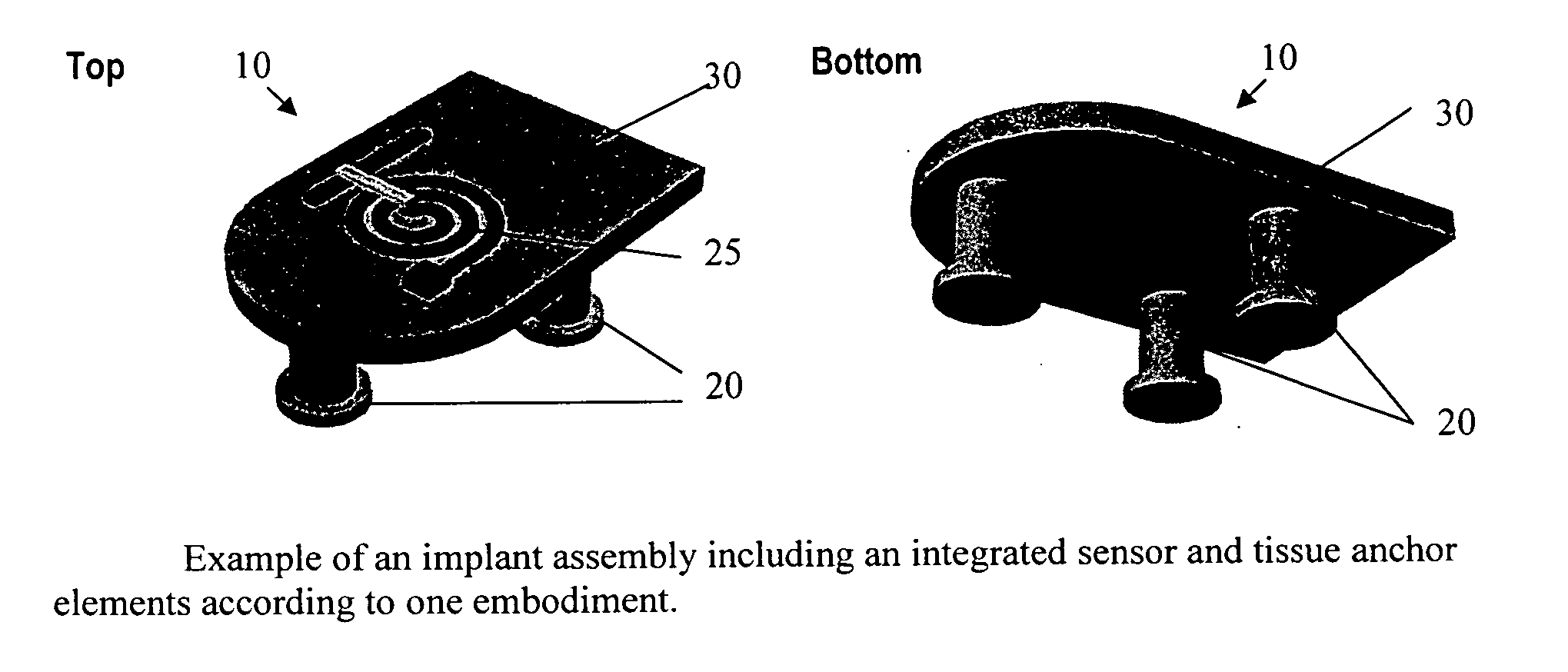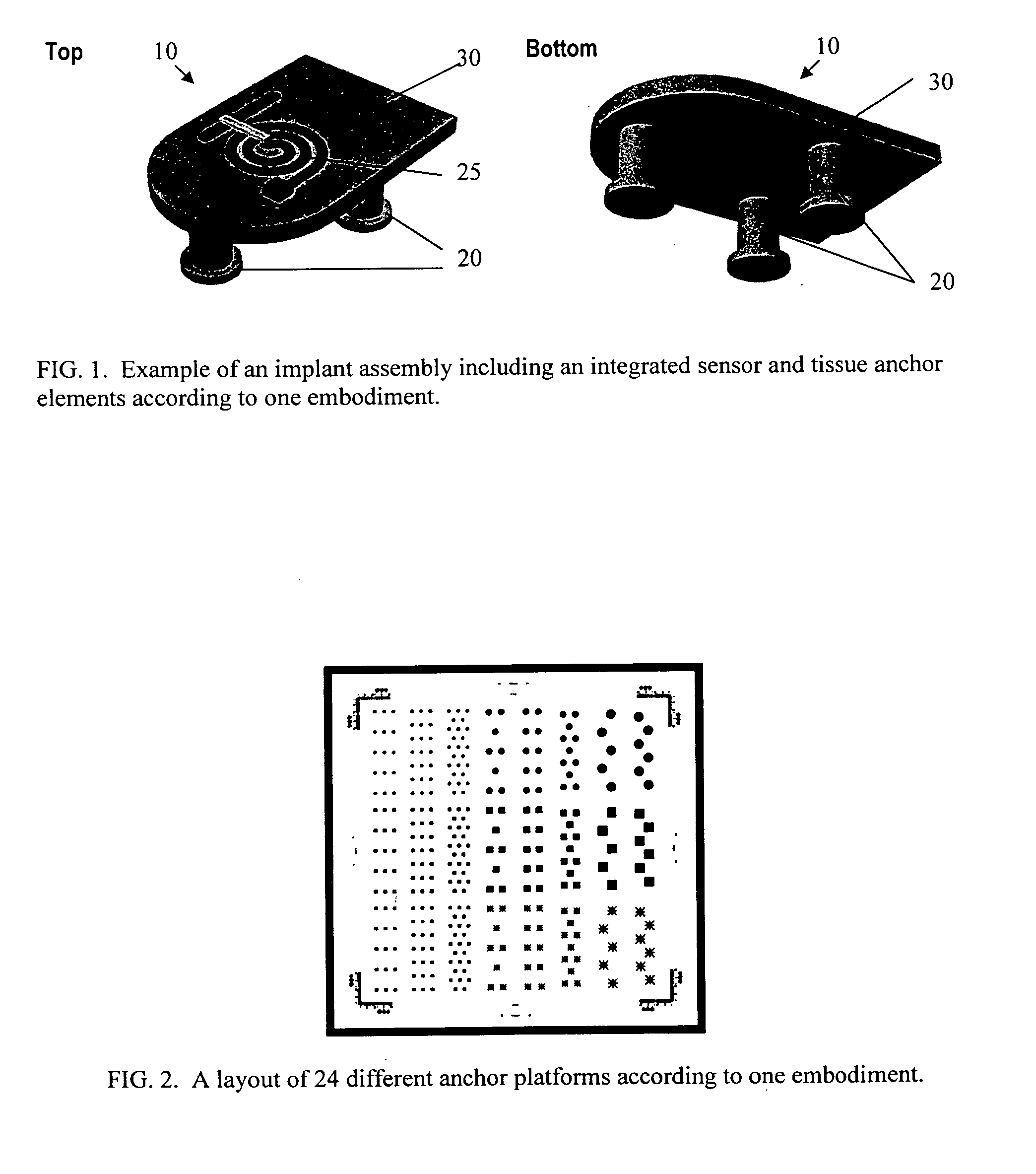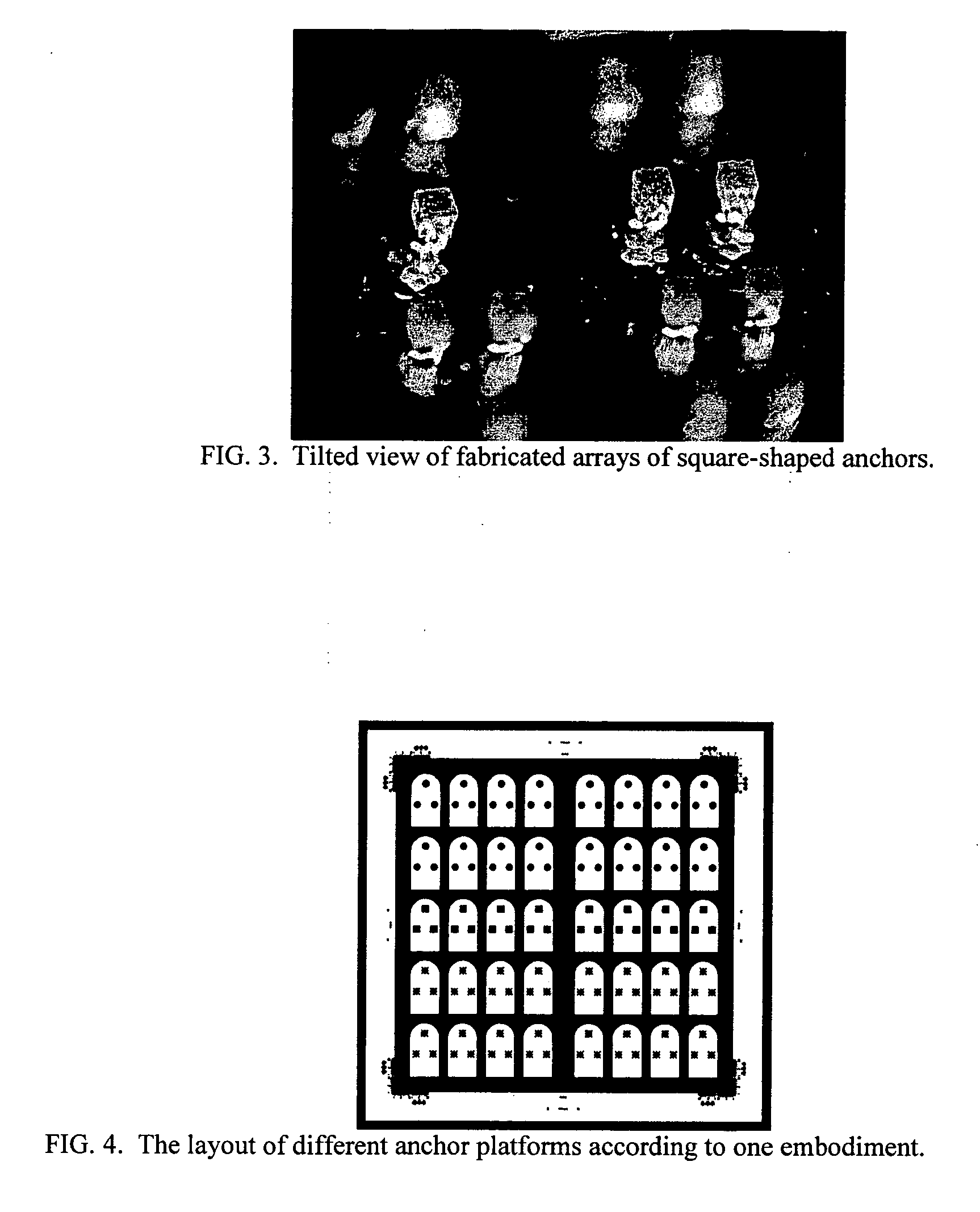Micromachined tissue anchors for securing implants without sutures
a micro-machined, tissue anchor technology, applied in the field of tissue anchoring systems and methods, can solve the problems of invasive and potentially damaging suturing devices to the iris, invasive suturing and other securing techniques, and potentially damaging the surrounding tissue, and achieve the effect of safe and practical way
- Summary
- Abstract
- Description
- Claims
- Application Information
AI Technical Summary
Benefits of technology
Problems solved by technology
Method used
Image
Examples
examples
[0039] Two generations of prototype intraocular implant devices similar to those described herein were implanted into rabbits and are being evaluated for adaptation to humans. In both versions of the anchors, the act of resting the anchors on top of a rabbit's iris was enough to hold the device in place. Although the precise removal force was not quantitatively determined, the mechanical locking of the anchors with the iris was more than sufficient to keep the devices secured to the iris. A significant amount of force is necessary to remove the devices once in place (such forces are greater than that exerted on the device during normal eye movement). FIG. 13 is a picture illustrating a device with anchors anchored on human skin. The device remains secured to the finger tissue even during serious shaking of the finger.
PUM
 Login to View More
Login to View More Abstract
Description
Claims
Application Information
 Login to View More
Login to View More - R&D
- Intellectual Property
- Life Sciences
- Materials
- Tech Scout
- Unparalleled Data Quality
- Higher Quality Content
- 60% Fewer Hallucinations
Browse by: Latest US Patents, China's latest patents, Technical Efficacy Thesaurus, Application Domain, Technology Topic, Popular Technical Reports.
© 2025 PatSnap. All rights reserved.Legal|Privacy policy|Modern Slavery Act Transparency Statement|Sitemap|About US| Contact US: help@patsnap.com



